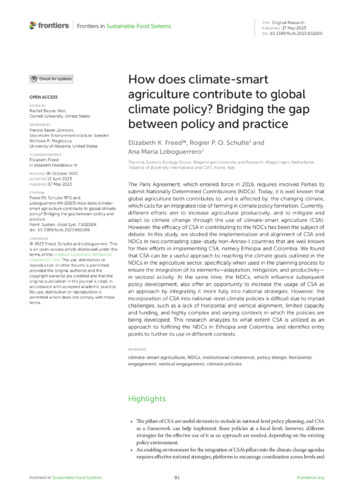How does climate-smart agriculture contribute to global climate policy? Bridging the gap between policy and practice
The Paris Agreement, which entered force in 2016, requires involved Parties to submit Nationally Determined Contributions (NDCs). Today, it is well known that global agriculture both contributes to, and is affected by, the changing climate, which calls for an integrated role of farming in climate policy formation. Currently, different efforts aim to increase agricultural productivity, and to mitigate and adapt to climate change through the use of climate-smart agriculture (CSA). However, the efficacy of CSA in contributing to the NDCs has been the subject of debate. In this study, we studied the implementation and alignment of CSA and NDCs in two contrasting case-study non-Annex-I countries that are well known for their efforts in implementing CSA, namely Ethiopia and Colombia. We found that CSA can be a useful approach to reaching the climate goals outlined in the NDCs in the agriculture sector, specifically when used in the planning process to ensure the integration of its elements—adaptation, mitigation, and productivity—in sectoral activity. At the same time, the NDCs, which influence subsequent policy development, also offer an opportunity to increase the usage of CSA as an approach by integrating it more fully into national strategies. However, the incorporation of CSA into national-level climate policies is difficult due to myriad challenges, such as a lack of horizontal and vertical alignment, limited capacity and funding, and highly complex and varying contexts in which the policies are being developed. This research analyzes to what extent CSA is utilized as an approach to fulfilling the NDCs in Ethiopia and Colombia, and identifies entry points to further its use in different contexts.

